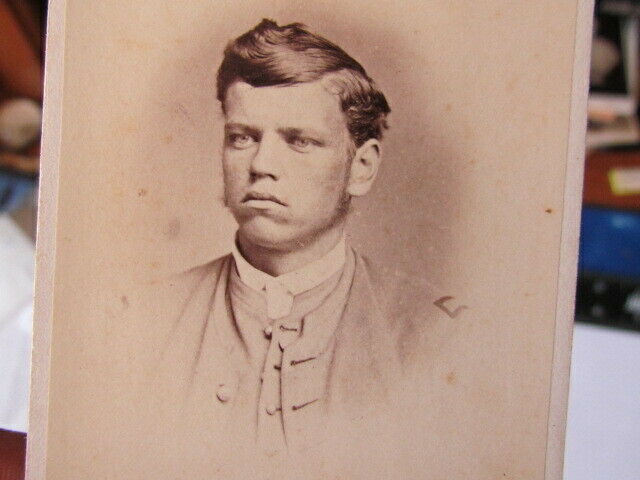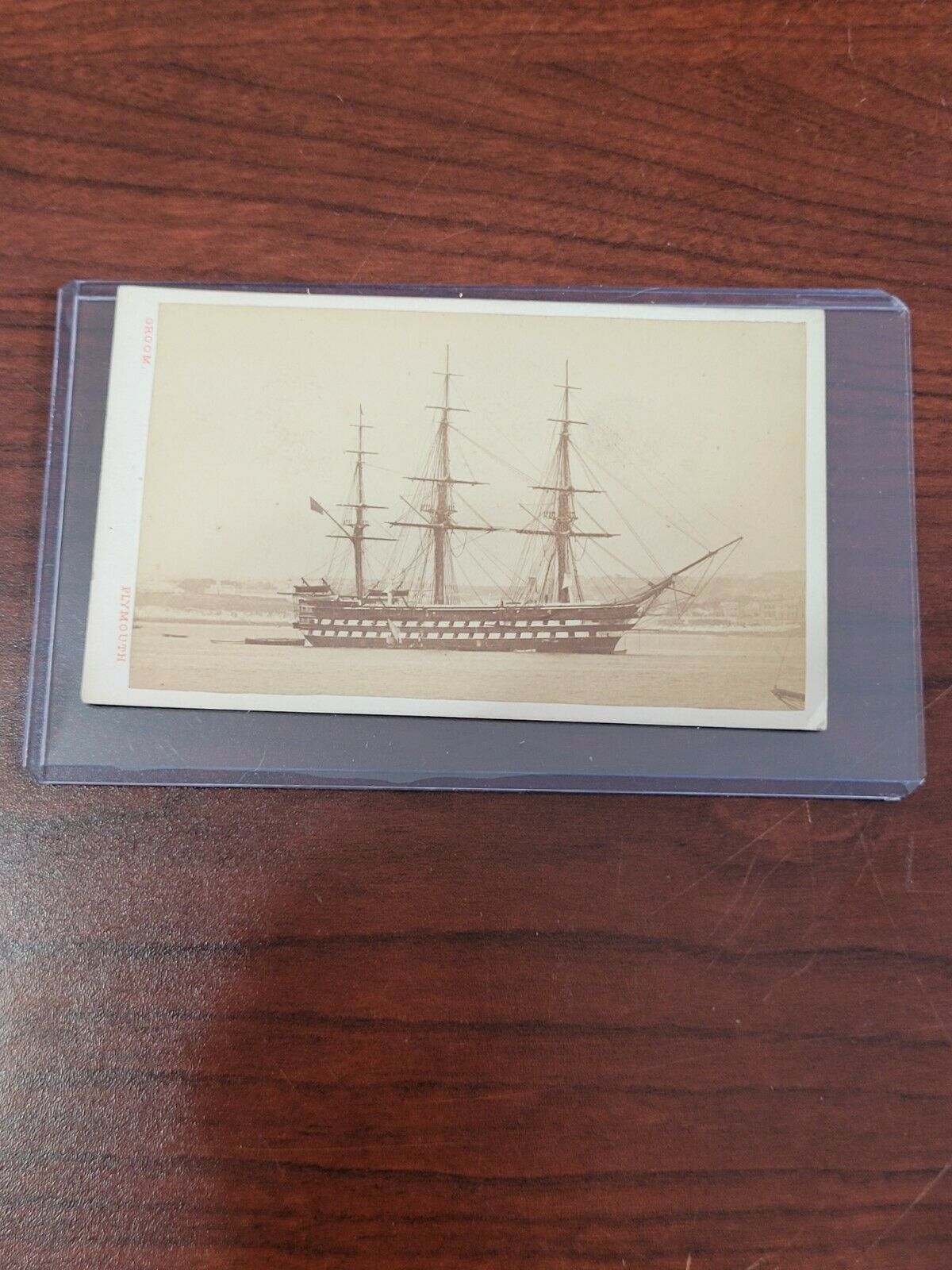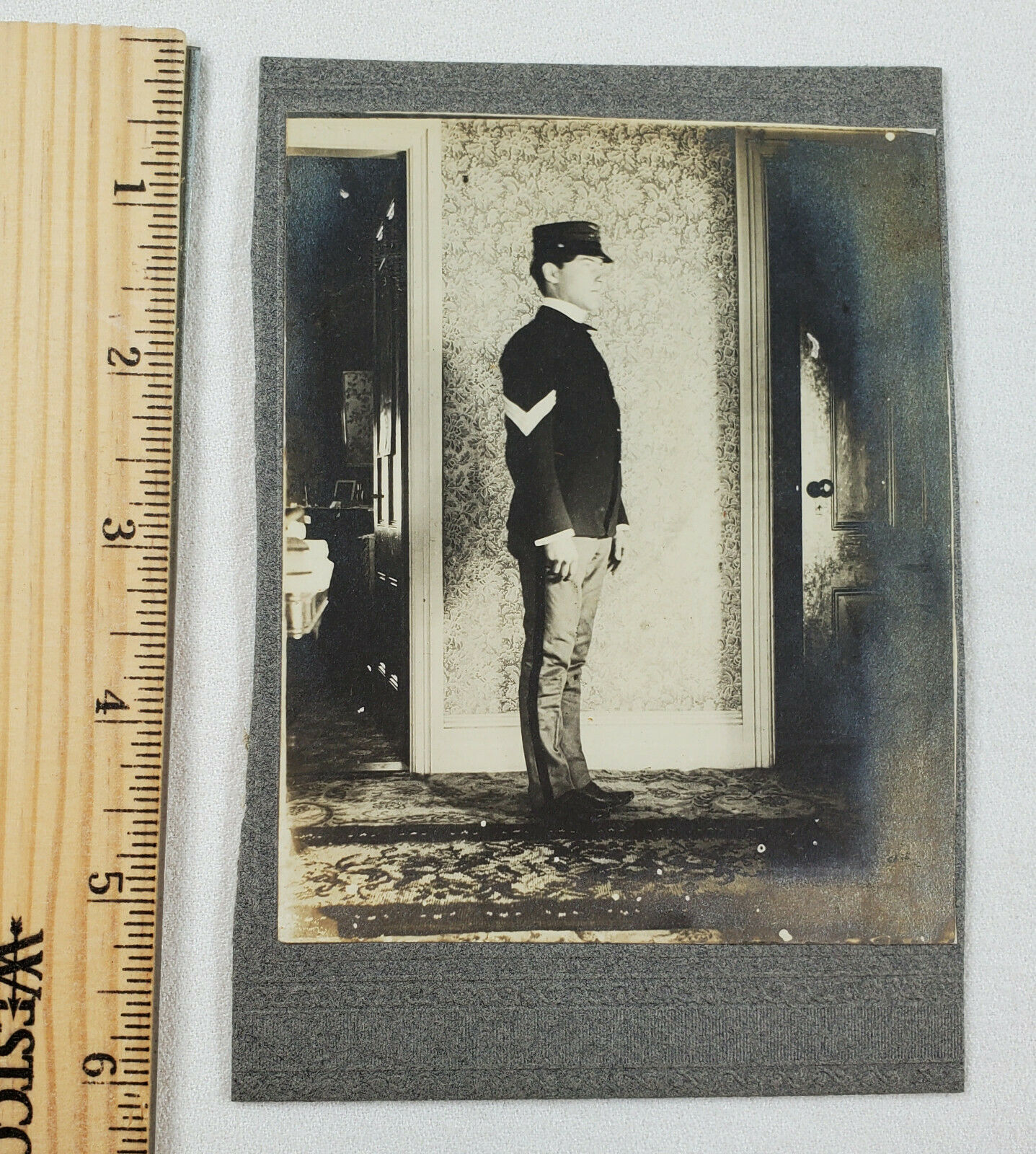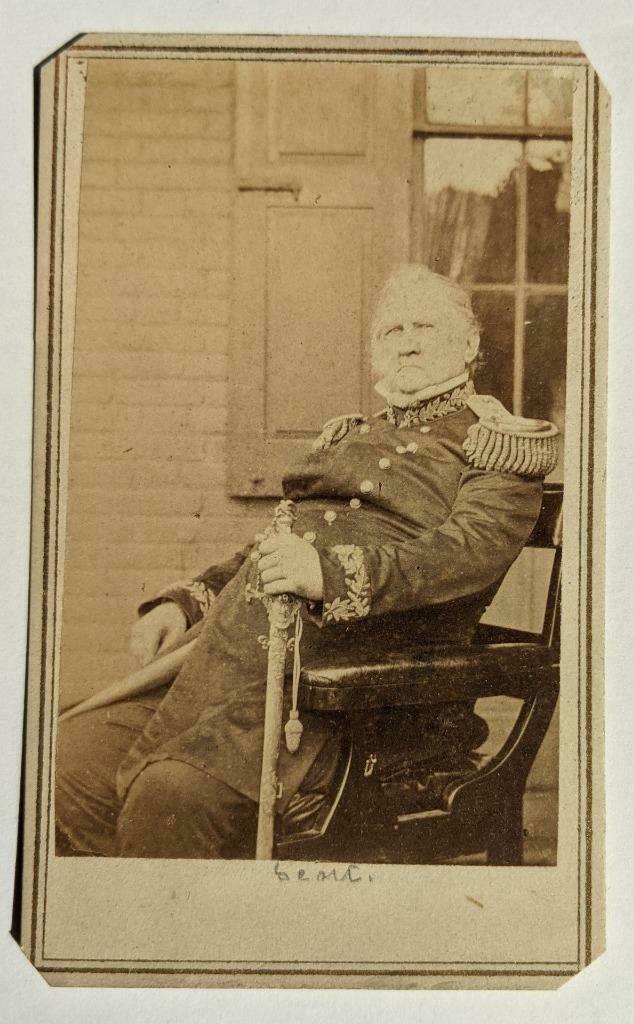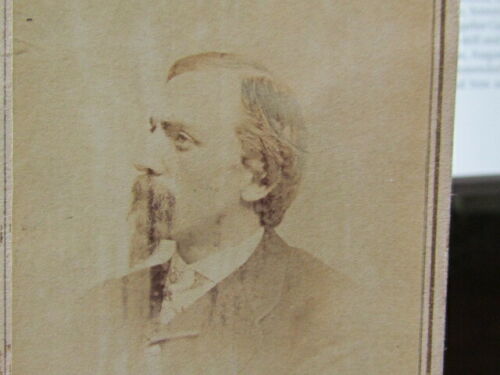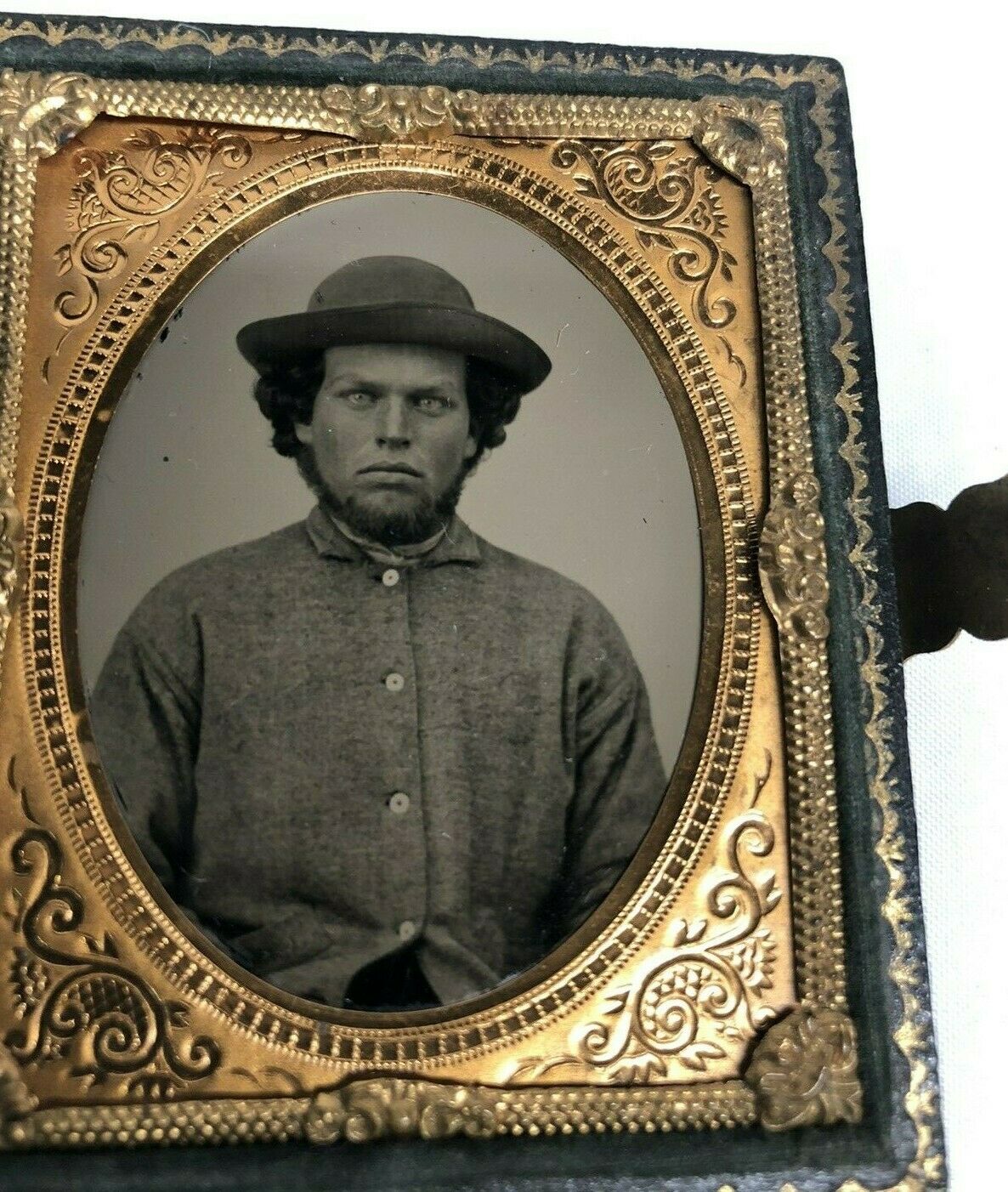-40%
THE HERO OF FORT FISHER ~ MEDAL OF HONOR ~ ORIGINAL CABINET PHOTOGRAPH & BONUS
$ 264
- Description
- Size Guide
Description
AN ORIGINAL 1880s CABINET PHOTOGRAPH OF MAJOR GENERAL GALUSHA PENNYPACKER~ AWARDED MEDAL OF HONOR FOR HEROISM AT FORT FISHER, NC AND BONUS. See auction pictures.~ No International Shipping.PAYMENT:
PayPal is our only accepted method of payment. Payment should be made within 24 hours of the auctions end. After 48 hours, an unpaid item case will be opened and the bidder will be blocked until payment is made unless they have contacted us previously. Four days after the opening of a case, the unpaid item case will automatically close which may impact the buyer's ability to buy on eBay. Non-paying bidders are blocked.
Remember that your bid is a commitment. We do not cancel transactions after auctions have ended.
Galusha Pennypacker
Galusha Pennypacker
Lithograph of Galusha Pennypacker
Born
June 1, 1844
Valley Forge
,
Pennsylvania
Died
October 1, 1916 (aged 72)
Philadelphia
, Pennsylvania
Place of burial
Philadelphia National Cemetery
, Philadelphia, Pennsylvania
Allegiance
United States of America
Union
Service/branch
United States Army
Union Army
Years of service
1861 - 1883
Rank
Brigadier General
Brevet
Major General
Commands held
97th Pennsylvania Infantry
34th U.S. Infantry
16th U.S. Infantry
Battles/wars
American Civil War
Awards
Medal of Honor
Signature
Galusha Pennypacker (June 1, 1844 – October 1, 1916) was a
Union
general during the
American Civil War
. He is to this day the youngest person to hold the rank of brigadier general in the U.S. Army; at the age of 20,
he remains the only general too young to vote for the
president
who appointed him.
Early life
Pennypacker was born June 1, 1844 in
Valley Forge, Pennsylvania
, to a family who had a long history of service in the military.
[2]
[3]
He was raised without having any memory of his parents, Joseph Judson Pennypacker (1814-1845) and Tamson A. Workheiser, after his mother died when he was still a baby and his father, who had taken part in the
Mexican-American War
, later became an adventurer in
California
.
[3]
His grandfather also served in the military, fighting in the
American Revolutionary War
. Galusha and
George Armstrong Custer
, two of the youngest generals in the Civil War, were 5th cousins, both being descendents of Paulus Kuster (1643–1707). He was also cousin to General
Benjamin Prentiss
through the Pennypacker family.
Military career
At the age of 16, Pennypacker enlisted as a
quartermaster sergeant
in the 9th Pennsylvania Infantry from
West Chester, Pennsylvania
. In August 1861, he helped recruit a company of men for the
97th Pennsylvania Infantry
, and was appointed as their
Captain
. He was promoted to
major
the following October. Pennypacker and his regiment saw action in
Georgia
at
Fort Pulaski
and in the battles around
Charleston
. In 1864, his regiment was transferred to
Virginia
, where he was engaged in the
Bermuda Hundred Campaign
under Maj. Gen.
Benjamin Butler
, in which he was wounded at the
Battle of Ware Bottom Church
. After the
Battle of Cold Harbor
and during the
siege of Petersburg
, he was appointed
Colonel
of his regiment, August 15, 1864. He assumed command of the 2nd Brigade, 2nd Division,
X Corps
of the
Army of the James
. He led his brigade into action at the
Battle of New Market Heights
and was wounded near
Fort Gilmer
. His brigade was attached to the Fort Fisher Expedition under
Alfred Terry
.
The Galusha Pennypacker Statue located off the north east side of Logan Square, Philadelphia, PA. Created by Charles Grafly, Albert Laessle, in 1934.
Pennypacker's greatest moment of the war came at the
Second Battle of Fort Fisher
, January 15, 1865, where he was again severely wounded. His wound was considered fatal and General Terry promised the young officer that he would receive a
brevet
promotion for his conduct that day. Terry called Pennypacker "the real hero of Fort Fisher" and remarked that without his bravery the fort would not have been taken. He was much later awarded the
Medal of Honor
, with a citation reading, "Gallantly led the charge over a traverse and planted the colors of one of his regiments thereon, was severely wounded."
He received a brevet promotion to
brigadier general
dated January 15, 1865. He survived his wounds after 10 months in the hospital and on April 28, 1865, he received a full promotion to brigadier general of
volunteers
at age 20 (backdated to February 18), making him the youngest officer to hold the rank of general to this day in the
United States Army
(though Marquis de LaFayette was just 19 when he received his Major General's commission in the Continental Army on 31 July 1777). He was appointed a brevet
major general
of volunteers on March 13, 1865.
Pennypacker stayed in the Army after the Civil War, being commissioned as Colonel of the
34th U.S. Infantry
in July 1866. He received a brevet promotion to major general in the
regular army
on March 2, 1867. His regiment merged with the
11th U.S. Infantry
in 1869 to become the
16th U.S. Infantry
, which he commanded until his retirement in July 1883 at the age of 39.
In 1889 Pennypacker became an honorary member of the Pennsylvania
Society of the Cincinnati
. He also was a first class companion of the Pennsylvania Commandery of the
Military Order of the Loyal Legion of the United States
.
Nearly fifty-two years after the Civil War, Pennypacker died from complications of his Civil War injuries. He died in
Philadelphia
,
Pennsylvania
on October 1, 1916, and is buried in
Philadelphia National Cemetery
. He died less than a month after the death of his noted cousin, former Pennsylvania Governor
Samuel W. Pennypacker
. His grave can be found in the officers section, grave 175.




